Whether we like it or not, remarketing is all around us. Have you ever been casually browsing for an item on Amazon, then see advertisements for similar products on your Facebook News Feed, in a promotional email, or at the top of a Google search a few hours later?
The purpose of remarketing is to catch up with visitors after they leave a website and re-engage them in an attempt to bring them back to the platform. In general, over 90% of people visit a website and leave without converting. The key benefit of a remarketing campaign is it gives brands the opportunity to get in front of the eyes of those who have already expressed interest. The desired outcomes are to:
Recover bounced website visitors and turn them into customers. Gain repeat visitors. Increase brand awareness. Strengthen SEO and content marketing efforts.Although the concept of remarketing can take many different forms, the message is typically a reminder to complete an action or to present new, personalized content to help prompt a buying decision.
An AdWords-based remarketing strategy is multi-faceted and requires a comprehensive approach, in order to complement your PPC strategy. Let’s dive into the finer details.
Types of Remarketing
Marketing as a whole involves many different channels and approaches. There are several major types of remarketing that come into play.
1) Standard Remarketing
In AdWords, this feature enables you to show ads to past visitors on the Display Network as they browse other websites and apps.
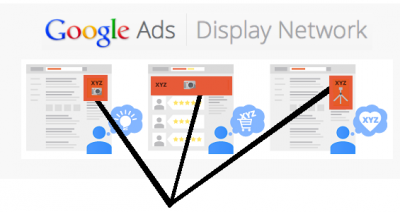
2) Dynamic Remarketing
This enables you to present ads on the Display Network to past visitors and show products they have already viewed during their previous visit.
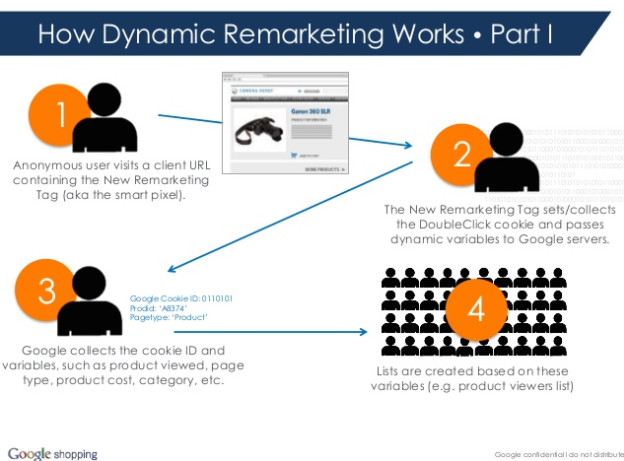
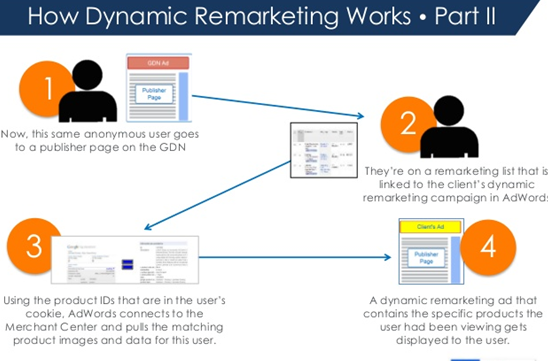
Image source: Verticalnerve.com
For this, you will need to create a product feed for the items you would like to show certain users. Instead of entering in each and every product, you can use categories. For example, if the visitor looked at a listing for a specific desk chair, you can simply enter “desk chair” into the feed so they see your entire related inventory.
3) Remarketing List for Search Ads (RLSA)
This type of remarketing displays targeted ads when former visitors conduct a search. As opposed to banner or display ads, the user sees a text ad on the search engine.
4) Video Remarketing
This one deals with when a visitor interacts with your video platforms. For instance, AdWords will allow you to show previous visitors ads when they are surfing YouTube or on Display Network videos and websites.
5) Email List Remarketing
This is a very common form of remarketing. Known as customer match, you can simply load your email list into AdWords and show them ads based on previous behavior on your website if they are signed into Google, Gmail, or YouTube.
Split Campaigns According to Remarketing Lists
As previously stated, a remarketing campaign involves many different facets. Targeting the right customers at the right time takes a good deal of planning, goal setting, and attention to detail.
For the best results, you will need to split your remarketing campaigns to adhere to specific lists. Here are some of the more prominent strategies to consider.
1) Target All Website Visitors
The most general (yet essential) way to remarket your ads is to target every visitor that interacts with your website.
2) Showcase Different Product Types
This is where you start to get a little more specific with your remarketing tactics. For example, if your online store sells shoes, you would want to display remarketed ads that appeal to both men and women. So, if someone is browsing for women’s shows, the remarketed ads would show the visitor everything in that category.
3) Target Users Who Didn't Convert with Benefits
For the visitors who quit your site without surfing much, you will want to set up a remarketing list specifically to promote ads to those who visited your website but did not buy anything. The goal is to get them to return to your site with some incentive to complete a purchase. If someone looked at a particular listing and did not buy, the remarketed ad would ideally promote that item (or ones in that category) with a special offer. This will eventually serve to improve your bounce rate.
4) Target Shopping Cart Abandoners with Promotions/Coupons
Shopping cart abandonment is a harsh reality of the e-commerce world. In fact, a study found the average cart abandonment rate is almost 75%! The people that fall under this category of shopper are VERY close to buying, and in most cases, just need a little extra motivation to complete the purchase. For this purpose, create a list of those who have only visited your “Shopping Cart” page and not the “Order Confirmation” page, then remarket those items with promotions or coupons.
5) Upsell and Cross-sell to Existing Customers
For the people who have converted on your website, it is a wise move to create remarketing lists for the purpose of promoting similar items to add to an order. For example, if someone buys a computer monitor, a good item to promote might be a mount or a screen cleaner. Set this list to “Converted Customers.” While this will likely be a smaller list, these customers are already up to speed and familiar with your website and are more likely to continue buying from you.
Amazon is perhaps the best example of this tactic.
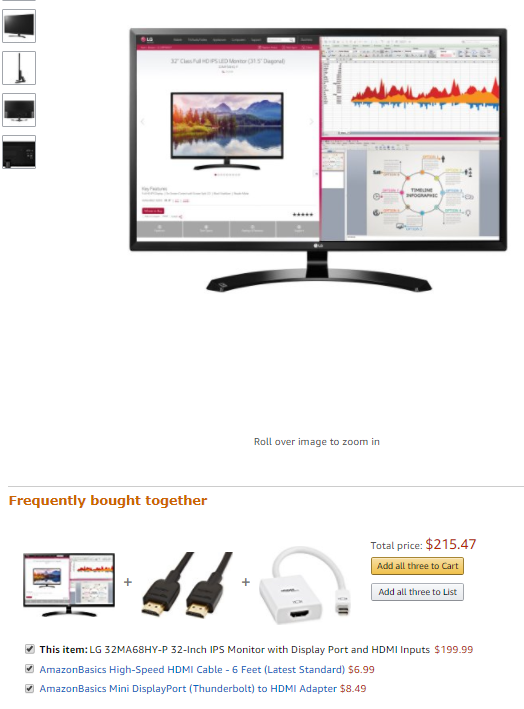
6) Target Customers at Regular Intervals to Increase Customer Retention
If you have begun to see a good amount of return traffic to your website and predict that customers are more likely to convert within a specific timeframe, create remarketing lists that play to these patterns. You might want to set a list to retarget customers within 30 days of a purchase, or 60, or 90.
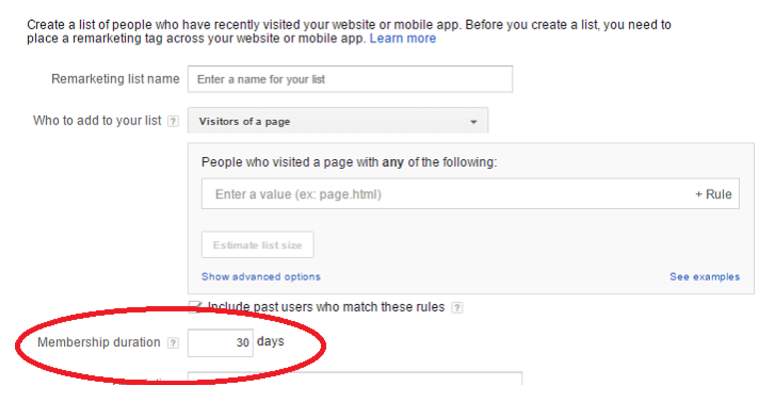
This all comes down to how well you know your audience and the nature of your product. For example, if you sell dog food, it would be a good inference that a purchase will run out in about a month. Therefore, creating a remarketing list for this duration would be a fantastic idea to not only provide relevant content to the customer but to increase their lifetime value.
The lists you create are the heart and soul of your remarketing campaign. The level of accuracy you have in building them will play a significant role in your success rate. Take your time with this. Look deeper into your analytics and learn the typical customer journey down to a tee.
Ad Strategies and Optimization
Now that you have compiled your lists to fit your business model and goals, you will need to get creative in the way you reach customers through remarketing. As you could have probably guessed, promoting random products to your previous visitors will not likely result in a good ROI. The ad must be properly designed to appeal to the right set of eyes at the most opportune time. Here are some popular optimization strategies to get going in the right direction.
1) Ad Optimization on Customer Interest and Behavior
Let’s say your website sells outdoor equipment. This is a VERY general industry. Your remarketing ads to those who have visited the “Camping” section of your site would be more relevant if they promoted specific gear like tents or sleeping bags, rather than a broad message that encompasses all sorts of outdoor gear.
2) Use All Ad Formats & Sizes Available to Reach Broad Audience Wherever They Go
People consume digital content in many different ways these days. Therefore, your remarketing strategy should include a variety of formats and sizes. A text or display ad would have a negative effect on a mobile device if it were ONLY optimized for a desktop. Be sure you create for a wide spectrum at first. After examining your analytics, see which ones are the most effective and adjust your approach accordingly.
3) Updating Your Ad Copies Frequently for Higher CTR
Customers mindsets are changing by the day, sometimes quicker. It is incredibly easy for your content to experience ad fatigue if you don’t change it up. If you want your ads to stand out and have a better chance at increasing your CTR, keep your eye on how certain ads perform and get creative in updating the copy to fit your evolving buyer’s persona.
4) A/B Testing For Ad Copies and Landing Pages –
When looking at any sort of digital marketing, A/B testing is an essential part of developing and growing a strategy. Remarketed ads are no exception. You should constantly be testing and optimizing your ads and landing pages to find the best formula. There are plenty of fantastic experimentation tools to use for this purpose.
Remarketing as a whole is a constant game of optimization. Throughout your entire strategy, you will need to be constantly looking for ways build upon your efforts. Essentially, if it is not broken, don’t fix it. If your ads aren’t gaining the traction you need, return to the drawing board.
Bid Strategies
Bidding is a crucial part of any remarketing campaign. Ultimately, this is what determines where your ad is shown, and how many people see it.
1) Use eCPC for Users Who Are More Likely to Convert
If you want to increase your chance of reaching more people with your ads, you must place a higher bid. In terms of remarketing, this approach is best used on your most effective lists. For example, if your business sells clothing, you would want to bid higher on lists that target people to pages for warmer materials in the cold months, and lighter in the summer.
You can also set up combinations for different sets of visitors:
a) People who visit the site but did not begin the process of making a purchase. b) Cart abandoners.
2) Use Automated Bid Strategies to Maximize Conversions
If you use AdWords, the Conversion Optimizer is an incredibly useful tool to help eliminate waste and maximize your ROI in real time. When using automation, there are two major strategies to consider.
a) Target CPA - This deals with the average amount you are ideally aiming to pay per conversion. Keep in mind, if you go this route, the target CPA can have a substantial impact on your conversions. If you go too low, and it turns out there is a big demand for your product or service, you can potentially miss out on clicks, and in turn, lose precious conversions.
b) Target ROAS – The primary objective of using Return-On-Ad-Spend (ROAS) is to gain more value per conversion. During the auction, your bids are automatically optimized based on conversion tracking. If your revenue goal per conversion is $10, your target ROAS can be set to 1000% for each dollar you spend on remarketing.
3) Manual Bid Strategy for Homepage and Product Viewers List
Homepage and product Page visitors are less likely to convert. This is because they are often just exploring what you have to offer or comparing your product prices with other e-commerce stores and marketplaces. It is advisable that you spend less on these less qualified clicks. To keep your average CPC lower, it is recommended that you set a manual bid strategy for homepage and product details pages visitors.
If you are content with using a manual bidding strategy, it is recommended to use a maximum CPC bid, as you won’t have to worry about paying more if someone clicks on your ad. If your remarking campaign is doing well, you can always increase your bid to expand your reach and improve your ad’s positioning to those who landed on your homepage or browsed your product selection.
General Strategies
Remarketing is a complex entity, to say the least. Every business will inevitably have a different situation with different requirements. However, there are many strategies that apply more or less universally.
1) Choose Location Targeting Based On Your Services/Products
Running a business online is not always restricted to borders and cultural barriers. Therefore, your remarketing strategy should be able to reach people regardless of where they are geographically, or what language they speak. As your website visitors may come from a variety of different areas across the world, you want to keep your traffic sources in mind and set your location targeting accordingly to serve as many people as possible based on your product’s demand.
2) Increase or Decrease the Membership Duration of List
If you decide to increase the duration of your list to engage people who visit your site within a larger timeframe, chances are your list will see decent growth. But, the leads might not be as strong. On the other hand, if you decrease the duration to capture more recent visitors, you will probably have a smaller list and the leads will likely have a better chance of converting. The drawback is you are limiting the number of customers you can reach.
3) Always Use Frequency Capping, Don't Annoy Users
This function sets a limit for how many times an an individual can be exposed to your ad per day.
4) Use Ad Scheduling to Show Your Ads At the Right Time
Throughout your market research, you have likely identified the times when your customers are most active. Using ad scheduling in your remarketing strategy enables you to specify hours and days when your ads will be shown, so they stand the best chance of being seen by the most susceptible eyes.
5) Show Ads As Quickly As Reasonably Possible
Accelerated delivery works to show your ads faster to quickly meet your campaign budget. This allows you to deliver your content the second your customers are looking through the Display Network.
6) Keep An Eye On Top-Performing Placements and Increase Bids
For obvious reasons, you want to have your best foot forward in a remarketing (or any marketing) strategy. Track how well your ads are performing and increase the bids on the more successful ones.
7) Exclude Low-Performing Placements
On the other hand, you don’t want to keep spending money on the ineffective ad placements. So, it is best to wash your hands of the duds.
8) Exclude All Mobile App Placements If Not Delivering
As important as mobile is these days, you need to be allocating your money for optimized ads strategically. The success of mobile ads can fluctuate quickly, so you will need to keep an extra close eye on how yours are performing and weed out the ones that are not delivering.
Pro Strategies
While these strategies are a little more in-depth, they can easily apply to a vast amount of industries.
1) Cross-Device and Cross-Platform Retargeting
Google recently began supporting cross-device and cross-platform retargeting. Essentially, this allows businesses to reach customers regardless of how they interact with their website. For example, if a user visits a site on mobile, brands only need to add them to the list once and are able to target them on desktop, tablet, or any other device using their ID.
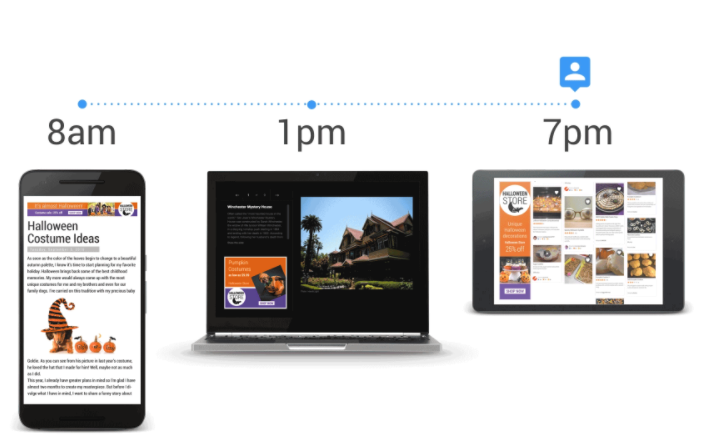
2) Use Dynamic Remarketing Properly
Dynamic remarketing works better for some industries than others. In general, if your business falls under sectors such as education, airlines, hotels and rentals, jobs, local deals, real estate, online retail, or travel, dynamic can be an extremely effective strategy.
3) Use All Types of Bid Adjustments
There are all kinds of bid adjustments to consider. The main ones are in relation to devices, location, scheduling, most effective content, placements, and engagement. Be sure you are constantly looking for how your ads are working from day-to-day. Using your research, be sure you are utilizing the correct bid adjustments on a normal basis to increase your ROI.
4) Target Those Similar To All Converters List
One of the primary goals of marketing is to reach new audiences. In terms of remarketing, it is incredibly beneficial to look for the commonalities in your converters list to expand. For example, let’s say you have a list made of people who bought video cards for gaming. Instead of targeting broad groups of those interesting in “computers,” you can create lists geared to people of similar interest levels. So, a good list would be designed to show ads for anything “PC gaming” related.
5) Use Other Remarketing Options and Platforms For Broader Reach
Users today are all over the web. In addition to search, people are consuming content on social media and countless niche websites. You should consistently be looking for ways to expand your reach with remarketing. Be sure to keep your eyes out for how your target audience is interacting with your industry online and how you can expand your strategy to relevant platforms.
6) Test Everything at Regular Intervals
Analytics are perhaps the most important aspect of marketing. Without the proper insights, it is exceptionally difficult to gauge how well your efforts are resonating with the audience. Even more, you won’t know how to improve and optimize. Be sure you are frequently testing to get a feel for new trends and consumer habits.
In Conclusion
The fact that remarketing is a primary vehicle for boosting website conversions is enough to tell businesses that the future of marketing is here. Companies are now able to provide relevant ads at the most opportune times. Not only does this make branded content more effective, it costs significantly less than traditional methods. However, remarketing is only successful if you are consistently optimizing it. Throughout your campaign, keep these ideas close to ensure you are making each dollar go as far as it can.
Innovative SEO services
SEO is a patience game; no secret there. We`ll work with you to develop a Search strategy focused on producing increased traffic rankings in as early as 3-months.
A proven Allinclusive. SEO services for measuring, executing, and optimizing for Search Engine success. We say what we do and do what we say.
Our company as Semrush Agency Partner has designed a search engine optimization service that is both ethical and result-driven. We use the latest tools, strategies, and trends to help you move up in the search engines for the right keywords to get noticed by the right audience.
Today, you can schedule a Discovery call with us about your company needs.
Source:




![Display Advertising Stats 2019: Semrush Study [Fashion Edition]](https://new.allinclusive.agency/uploads/images/display-advertising-stats-2019-semrush-study-fashion-edition.svg)
